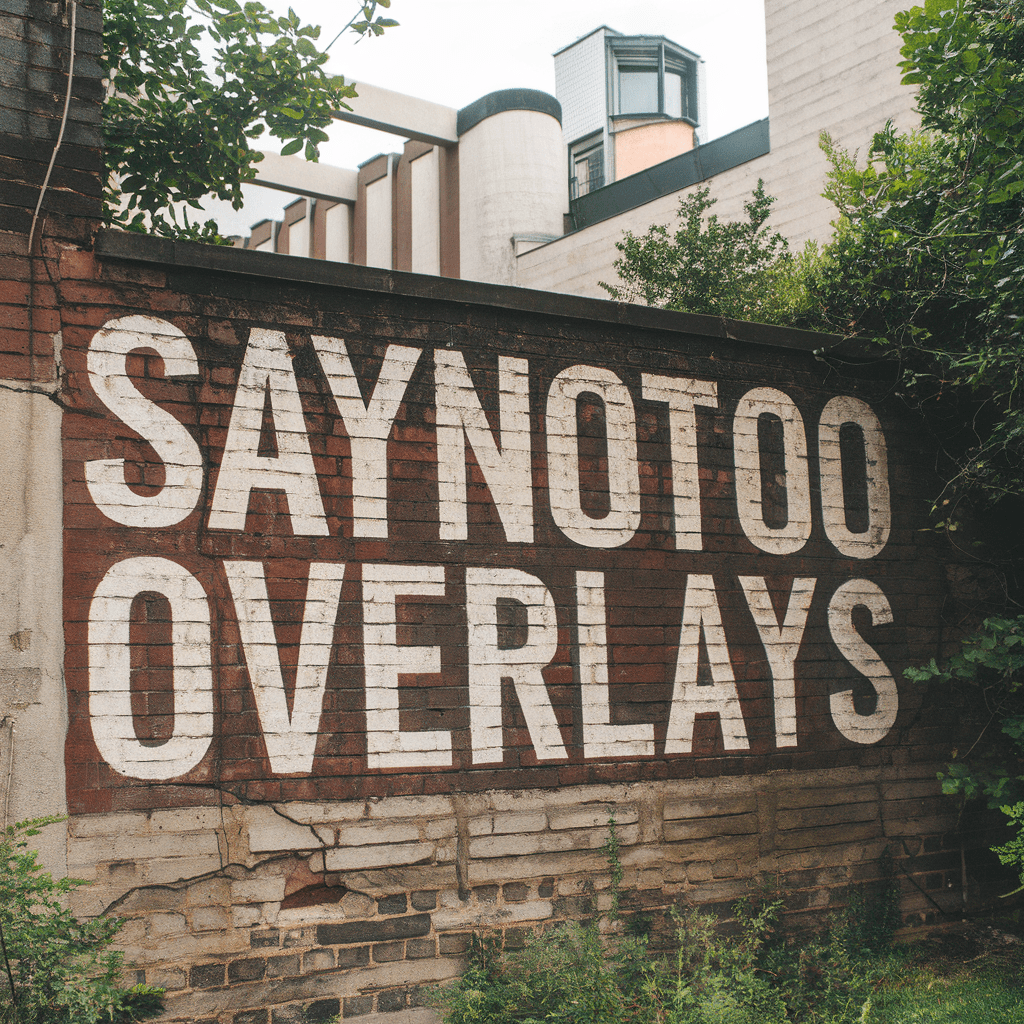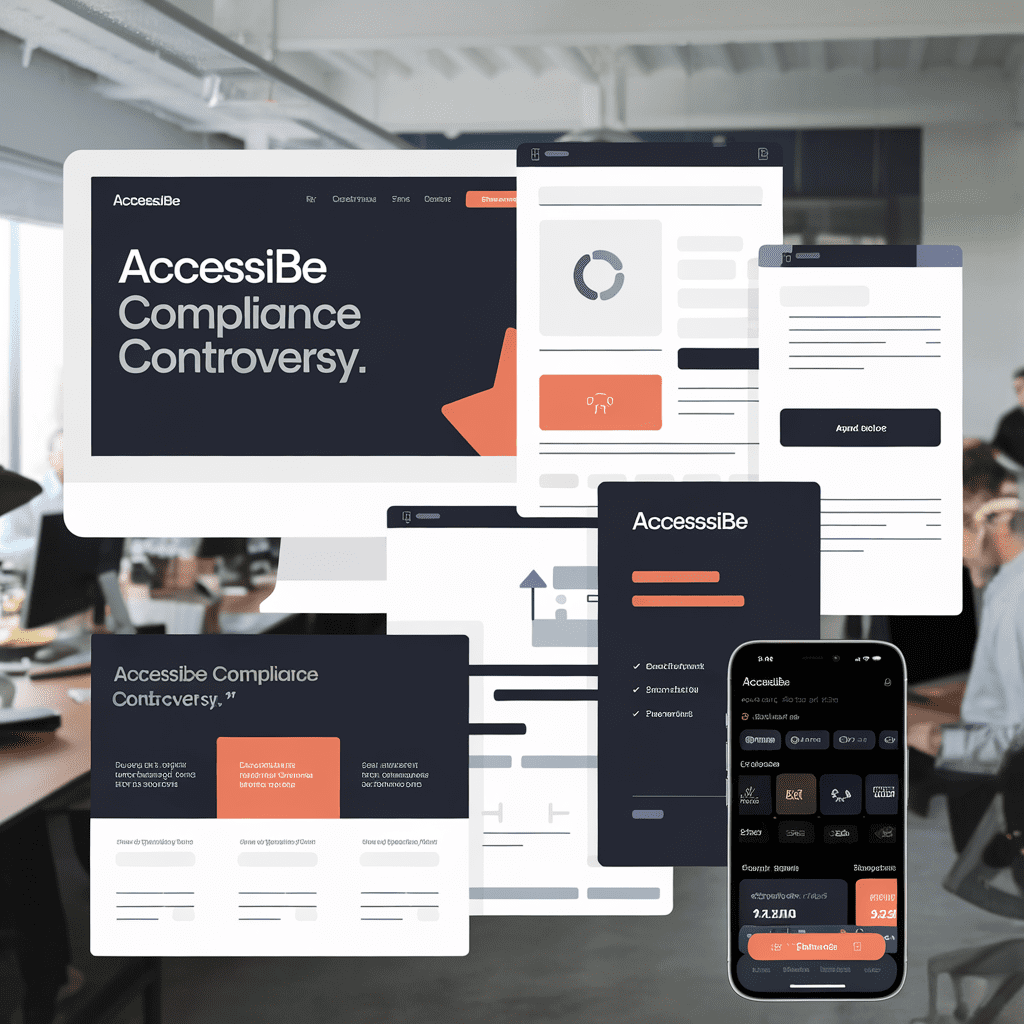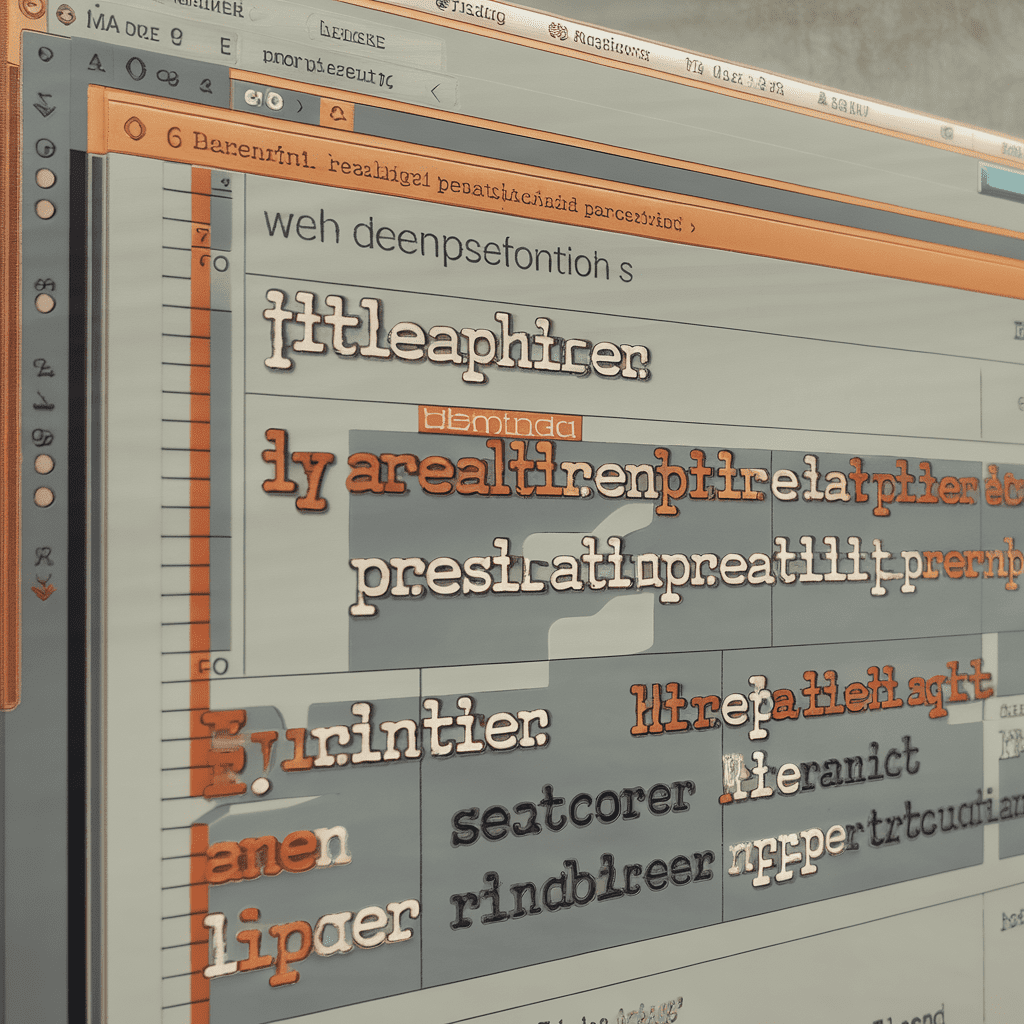
Hey there, welcome aboard our "SayNoToOverlays" deep dive! Setting sail in the vast sea of accessibility features, you're probably itching to know which lifeboat will keep you afloat—or better still, speed your journey toward success. Don't worry; help is on the way! Look understanding tech stuff can be as wild as whitewater rafting without a paddle, especially when navigating the tributaries of accessibility software. You've probably spent countless hours trying to compare your options and make your online assets more accessible—and hence, superior. Our “SayNoToOverlays” comparison article gives you an expert’s view like the crow’s nest atop a ship with clear and high visibility. Over the course of this voyage, we’ll scrutinize Oaky’s features against the majestic landscape of other bright twists on accessibility technology standards. From intricate icebergs to towering waves, we’ve got you covered—every intricate facet and possible pitfall. Plotting a course through price tags, feedback from seasoned voyagers in our community, and trust us, there's a community of us navigating these waters (*hint: you're not sailing solitary anymore*). So, why not embark on this journey? Get ready to unlock detailed insights about “SayNoToOverlays” that will turn your quest for the ideal tool from intimidating into fun-loving adventure!
Understanding SayNoToOverlays
Diving headfirst into the world of accessible technology can feel much like being dropped into a jungle with nothing but a blunt machete. Suddenly, you're faced with jargon like 'ARIA,' 'WCAG,' and more! Yet amongst this dense foliage of terms, 'SayNoToOverlays' stands out, calling to you like the sweet trill of a technicolor parrot. But how do we separate the tweets from the squawks? Journeying deeper into the brush, we discover, at its core, 'SayNoToOverlays' is all about making websites more usable and comfortably accessible for everyone. It's that trusty yellow sign in a wet supermarket aisle saying "clean up over here, folks"–warning you off potential pitfalls in creating an inaccessible website. These overlays–think of them as cling films strewn across your morning toast–mask the real plump and juicy orange of your website's content, flustering users and barring them from gaining the equal access they deserve. And while these unnecessary overlays might glitter tantalizingly to some, like fool's gold in a miner's pan, they actually increase accessibility or usability challenges instead of reducing them. So going overlay-less gives your users an undisrupted pathway (no branches whipping them in their faces!) to what they’re really after: the crispy toast-like substance of your site’s content. A good ally in this tech jungle – ARIA or Accessible Rich Internet Applications – although used for enhancing Internet app accessibility, advocates for #SayNoToOverlays. For you see, overlays often run afoul with certain ARIA-rich functionalities on websites, creating accessibility speed bumps in their wake. Transitioning from this bird's eye view comparison, we are now primed and ready for the real journey of understanding why overlays can often be cantankerous monkeys riling up your otherwise enchanting safari into web accessibility. Why not munch on that nutritious food for thought for a moment and gear up for our next part of this adventure together? Stay tuned folks, tips on how to make your website fly faster than a toucan coming right up!
Exploring Key Features
Taking a gander at Internet technology, using overlays like rogue popups or temporary banners seems tempting, right? They offer a flashy way to present info but can often pose accessibility and usability nightmares. Now, fancy this: If placing a drizzle of honey attracts ants, populating a website with unnecessary overlays will cause potential users to flee. Not very community building, is it? Continually, we should be telling web designers everywhere to say no to overlays. Here's why! First up is our chief offender—popups. Often seen as a fast track to increased conversions, these larger-than-life irritations are notorious for obscuring website content like an unwanted wall at a football match, despite motives seeming meritorious. However, choice champions the versatility of simple notification slots, more unimposing and sleek—and for accessibility frameworks like ARIA, your brand's savior, they’re as welcoming as mum's loving embrace. Secondly, we have those fly-on-the-wall banners that sit tight on your webpage while everything else scrolls. Cool? Maybe. More like living in a house with minimal window space—a tad bit stuffy if you ask me. Interpret this in terms of Web Accessibility Initiative (WAI) and Contrast Ratio Methods, and the comparisons get quite green around the gills. It reduces viewability in its quest to hang onto precious pixels, controlling usable screen real-estate to about the capacity of Granny's old spectacles. In line with SayNoToOverlays and honcho accessible web design principles, WCAG has doled out caution. Imagine being starved of ability to navigate smoothly—the torture real, folks! Analogously, unfair usage of overlays congests our digital highway causing flare-ups in users—a ‘no thank you’ from both accessibility and usable outlooks. Add to the list Alt Texts–subtle but mighty features WHERE’S MY FLESHY TUBE OF COMFORT stickers on drive-thru orders; believe me, someone appreciated that missing straw! Not employing these correctly is a culinary (and website traffic) misstep. In summing our bout of investigative rambling, Ask yourself 'why jeopardize usability at the caveat of site flair when accessible alternatives look fetching for increased traffic and audience satisfaction?' Now, how's that for some food (or stickers) for thought?
Benefits of SayNoToOverlays

Cruising forward on our interactive journey, let's focus on the world of web overlays. Picture this—after a scruffy day at work, you decide to relax with your favorite podcast. But there's a twist; the overlay pops up like an uninvited lobby musician, wailing, "subscribe NOW!" Ah, there go your relaxation vibes! Welcome to the everyday plight of internet users, more so for users who rely heavily on accessible tech. But, wait! In enters our prized contender, SayNoToOverlays. Like your very own superhero grappling with sly pop-ups and navigation layers, it aims to enhance user accessibility and spell over usability issues. Sounds like a dream, doesn't it? Well hang onto your hats, folks, it gets better! SayNoToOverlays isn’t just here to bust annoying overlays. It serves a larger cause—building stronger and more inclusive online communities. Giving equal access to everyone regardless of their ability is its manifesto—like your upbeat and nonchalant town mayor taking stand on fairness and inclusivity. Comparing it to other accessibility options could sound unfair. We’re talking practical benefits other options grapple to match, creating a contrast harder than sorting Skittles by color in the dark! For instance, SayNoToOverlays tackles those irksome pop-ups and unfamiliar keyboard traps ensuring free-flow navigation. And who wouldn’t love interrupted binging, right? Conversely, other applications might miss such snazzy details, keeping usable bits in the shadows. Lastly, for an audience neck-deep in accessible rich internet applications or ARIA, SayNoToOverlays is like stumbling upon hidden loot. It checks all boxes from WAI guidelines to contrast ratio and accessible PDFs positioning it as a whiz-kid on the block of Accessible Web Design technologies. So buckle up! Navigating the tumultuous sea of accessibility could get smoother, all thanks to SayNoToOverlays.
Drawbacks to Consider
Latching onto our chat about overlays, it's hard to overlook the fact they're a bit like that infamous party guest who pops up uninvited. They seem cool at first, with their flashy entrances and offers of discount 'cocktails’. For tech geeks like us, these popups seem like a shortcut to boosting appearance and conversions—sort of like sneakily wrapping nasty-tasting medicine in an appealing delicacy—to bird-dog potential customers. Sure, this novelty may initially magnetize cursor clicks, but truth be told—as we keep juggling disruption and annoyance—they soon start stealing the cookie in the party of usability and accessibility. Now, "SayNoToOverlays" is not just a black and white statement — it's a balance we're seeking. Remember those vague photo descriptions that used to give us migraines? Imagine combining that with popups taking half of your screen real estate! Sounds catastrophic, right? It's time to highlight those dark corners of overlays that can make our jolly tech escapade a nightmare. Cue in accessibility issues. Behind the glitzy glamour of overlays, lurks the hydra of inaccessible design, disrupting the user experience for a broad section of our community. It can blur the contrast ratio on screens or mess with well-intentioned alt text. They fall off the edge in the race towards equal access and cultivating an inclusive digital community. Comparatively, designs that sweat over WAI and WCAG guidelines produce content more supportive of assistive technologies like ARIA. They help empower everyone irrespective of their abilities or disabilities in the online space by eliminating hurdles. Think of them as the superheroes of web design armed with powerhouse tools like accessible PDFs— turning despair into hope. So hey, what if instead of being charmed by those flashy overlays, you spend your creativity more inclusively? Trust me, it's high time we permanently uninvited this particular party crasher. After all, who would prefer a knock-off party guest over a superhero striving for balance and equal access?
Pricing Options
It's like being asked to choose between an irresistible snickers bar and a gooey dark chocolate brownie—both full of delicious potential but each unique in its offering. That's how we feel when comparing the many pricing options that cater to those who live by the #SayNoToOverlays ethos. First on our dish is pay-as-you-go pricing models. They're flexible, easy-going, just like your surfer buddy who rides along with the waves. This model saves you from upfront mega charges and allows you only to dole out your pennies when you use certain accessibility features on a website. Suppose you occasionally need to use alt text or ARIA. Going this route sunggles in well with your financial books. Then, there're the monthly subscription plans that transform 'grapple with uncertainties' into 'sleep like a Luke Skywalker in hyper-sleep mode'. You know each month what you’re going to pay, so no nasty surprises there! Ideal for the rising number of WAI crusaders because hey, you regularly work on improving web accessibility standards. Lastly, let’s pull out the plate bearing the infamous pay annually. Think of this option as promising a committed relationship; up-front cost is high but serves you well in creating accessible PDFs or pushing the needle on the WCAG agenda. Continuing our analysis, let’s not forget this essential nugget: each pricing option has its own merry delights and minor pokes. Tricky as it seems, it's all about understanding the turn your tech-journey is taking and digging into the real deal these plans offer. Whilst subscription plans are fantastic for consistent use, pay-as-you-go might be a lifesaver when budgets are skinny. Carrying these observations forward in our assessment, remember this ultimate golden rule: Haste makes waste. Splash around in your options, chew on them. Mull over whether it aligns with your core values – like our lovely nugget of community-building. The pricing option you select is like the vehicle for your tech adventure—make sure it's the ride you can enjoy and afford! So, lads and lasses, why not give these accessible treasures a thorough rummage? Navigate the vast sea of choices, weighing each feature, and find what fits your sail best because you'll navigate the #SayNoToOverlays storm like a web accessibility pirate! We wholly trust you to steer towards maximizing usability for all, proving a beacon of hope in the rising tide of digital inclusion.
Community Feedback
Launching forward with the spirit of inclusivity, let's square off our chatter to the critical aspect of the "SayNoToOverlays" campaign: getting precious feedback from our tech-for-all community. They keep the bold ‘n bright torch of accessibility alive. Now, imagine this scenario—you're striving to grok intricate overlays, run into hitches and flip your hair all wild and wooly with frustration. Wouldn’t you sigh, “I wish there was someone I could talk to about this!” Well, there is! Members from the A11y alliance rallied passionately behind "SayNoToOverlays." For many, usable internet experiences often evoke the same elation as finding an accessible bathroom at a five-spangled concert. Spot on, eh? Swapping tales from the tech hustings, lots affirmed that overlays often muddy the digital waters instead of providing clear swim lanes. Tricky tool-tips like overlays typically act more as boulders than stepping stones on the accessibility path, especially if non-standard elements paddle in without warning. Efforts should be guided towards crafting ARIA attributes or alt text optimized for screen readers instead. But alas, not all technology big-wigs practice what they claim. That's why so many have decided to take a resolute stand—SayNoToOverlays—with a handshake emoji attached. Moving this formidable insight upwind, others highlighted a different shade of gray. Overlays can be aesthetically pleasing and brew up pocketfuls of user interactions if done right. Balancing these variances like hot-and-cold coffee spoons, it’s clear "SayNoToOverlays" isn't a one+Coffee,True,Lemon=Love equation. It requires thoughtful tinkering and adjustment, adding just the right amount of contrast ratio or devising an accessible web design that flows smoother than summertime jazz. So, why don’t we cook up a storm together and tear the road with dedication until we arrive at equal access for all? After all, everyone should groove to the technological rhythm. Remember, you're not alone on this wild ride. The A11y-Usability tango community is a safety net lined with silk—always there to catch you when you stumble in your dazzle boots. With solid feedback, we can get closer to laughing our overlays goodbye. Our hope is like a well-booted football—if we work together, we can make it buzz past challenges and score goals. Why not take a shot? Let's "SayNoToOverlays." Onward and upward, Yosemite! Sure as shooting stars, every shared investigation point brings us one pace closer to navigating the immense expanse of internet accessibility and usability successfully. Mighty interpole constellations lead us forward towards finding an 'internet-for-all' solution with more steps resetting on the right path instead of missteps. Don’t forget to buckle up, for this digital theme park will conjure more breathtaking rides. It’s a grand roller coaster trip we're tackling together, folks! Championing contrast ratios to accessible PDFs and beyond, we'll snug in our chit-chats on the next hot topic in our vivid online discussions. Stay tuned…
Conclusion
Let's wrap this up, partner! You've journeyed with us through the fascinating world of SayNoToOverlays. We've spelunked into its impressive functionality, hiked over the verdant hills of its benefits, and navigated a rocky river of potential drawbacks. We even counted our doubloons to help you make informed pricing decisions. After all, who doesn't appreciate a good budget-savvy advice? But like any great adventure, it ain't over ‘til the sunset, amigo. We've shared your story with our spectacularly accessible and usability-focused community and are geared up to help you take that big leap towards your very own SayNoToOverlays quest. Together, we're building a community, enriching lives through technology while facing everyday accessibility challenges head-on. So what's next? Dive in headfirst! Give SayNoToOverlays a whirl and see how it can transform your digital excursions. Check out other's experiences, share your own, and help drive the future of accessibility in tech. Remember, increasing website traffic isn’t just about playing the SEO game right – it’s about knitting an engaging trail of words that leads back to your valuable product or service. Connect genuinely, offer real value, and dare to be wonderfully different! Trust us, we know where we’re going. Take a shot at it today; you'll love where it takes you! In closing, we denounce overlays and celebrate progress in accessible tech—because everyone deserves equal access that sparks joy. So let's say a big YES to inclusivity—and together, clinch a grand victory as we SayNoToOverlays! And lastly, never forget that fun is our favorite F word – after family, of course. Converting challenges into opportunities can be thrilling if you got the right hat for it. And in case you are wondering, by "hat" – we mean determination! Taking our hats off to you, buddy, as you embrace this exciting new chapter. Sail forth knowing you're emboldened by insight and ready to make an impact! You’ve got this and we've got you! Let's create an internet yellow brick road, together – accessible for us all!
FAQ:
FAQ Section: What makes SayNoToOverlays stand out from its competition? SayNoToOverlays thrives on its unique selling proposition—offering user-friendly experiences by discouraging the use of overlays. Unlike other software solutions in the market, this tool values interface simplicity and streamlined interactions, which is evident in its key features. Furthermore, while other options might rely heavily on overlays for promotional purposes, SayNoToOverlays remains committed to improving content accessibility, keeping the user engagement at the forefront. Are there any notable drawbacks to using SayNoToOverlays? While SayNoToOverlays offers a host of benefits, like any product, it does have some limitations. It may not be the right fit for businesses that frequently use pop-ups or banner ads as a strategy for engaging their audience or capturing leads. Additionally, it might require users to find alternative ways to offer discounts and special offers. Despite these challenges, its principal dedication to user experience can prove beneficial in the long run. Can you give an idea about its pricing structure? SayNoToOverlays' pricing options cater to a wide range of budget preferences. While exact figures haven't been shared here due to their dynamic nature, remember to compare them along with the value you get—improved user experience and potentially lower bounce rates. Correspondingly, also consider community feedback, as they provide real-world insights into the software’s cost-effectiveness. Always analyze pricing according to your unique need and ensure it aligns with the value it brings to your business.


